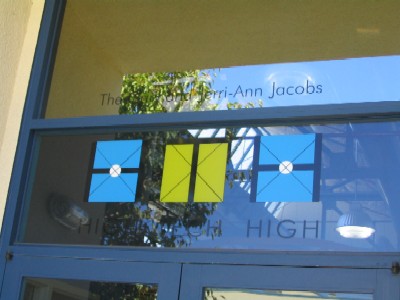Chester Finn and Rick Hess have written a long analysis of No Child Left Behind in The Public Interest. It’s generating a lot of buzz as the first serious entry in the coming sweepstakes on ideas about how to improve NCLB. That’s largely because (a) Finn – Hess put NCLB in a valuable historical context and (b) their basic project is improving it rather than gutting it. For no other reason than that, it’s worthwhile reading.
Hess and Finn walk though some of the compromises and resulting contradictions in the law and analyze what we can tell about their efficacy, or lack thereof, so far. They also show how NCLB in some ways re-creates the macro mistakes of previous initiatives tracing to the Great Society. This is an animating theme for Hess and it’s well described here.
Still, though some NCLB critics are already touting the article as evidence of the broad support for their position, they should think again. Finn and Hess note that NCLB abandoned “time honored” school choice principals and despite many thoughtful recommendations for improvement, skepticism about whether public institutions can get the job done implicitly pervades much of the analysis. The foundational dispute between right and left in education boils down to whether the leverage needed to improve public education comes down to allowing clients to leave or whether it can be publicly applied through standards, more money, or whatever. Most left-leaning NCLB critics come down in a different place on that question than Hess and Finn though their zeal to take down the law seemingly blinds them to this.
NCLB proponents will find much not to like as well. For starters, Hess and Finn essentially argue for jettisoning many of NCLB’s rules for “subgroup” accountability (basically holding schools accountable for various subgroups of students). They also tout a “value-added” model for accountability while simultaneously acknowledging that for most states a system of this nature is still just a speck on the horizon. Though hardly alone in this regard, Finn and Hess don’t tell us how, in light of this, it constitutes an actionable idea for a near-term fix to NCLB. (They also, like others, fail to reckon with whether even under a value-added model we’ll again flinch at crunch time, see below.) Similarly they do not address why NCLB’s current safe-harbor rules do not get at some of the problems they describe or how these provisions could be modified. Hess and Finn also chide NCLB for being out of touch with basic political and policy realities while they, apparently without irony, propose national content standards as one way out of the current thicket.
Still, make no mistake, there are plenty of good ideas as well (for instance requiring states to differentiate among schools that need improvement for different reasons and accelerating the timetable for supplemental services – though Edu Commentary doesn’t see the need for a corresponding deceleration of public school choice).
But, overall Hess and Finn seem to largely ignore the political realities that surround the creation of a law like NCLB. For instance, it’s not fair to lay the law’s contradictions at the feet of an administration seeking bipartisan compromise on its signature education bill or blame them on the various political coalitions that came together to pass the law. These compromises are the result of the educational policymaking environment. Groups representing special education students would want these children included in the accountability rules regardless of who was in the White House. Similarly, the push for disaggregated accountability, which Bush embraced in Texas, was also a key priority – and continues to be — for the Education Trust, Citizens Commission on Civil Rights and key leaders on the Hill including Representative George Miller (D-CA) and Senator Bingaman (D-MN). And, regardless of the research evidence, the teachers’ unions are going to demand that the law require certification for teachers in addition to subject matter expertise.
When it comes time to try to fix the parts of NCLB that need fixing, these same politics will surround the discussion. So, while Hess and Finn point out some sensible ways forward, their ideas will meet the same obstacles and likely suffer much the same fate. That’s the messy reality of education policymaking right now. It’s important to remember that with a few exceptions, NCLB’s provisions are not there by accident or happenstance.
One final irony bears mentioning. Hess, who has written insightfully about the “predictable” politics of retreat when educational initiatives begin to cause real consequences could himself in a small way be abetting this process in this case.
Many of the problems Hess and Finn describe are real. But many more NCLB gripes are the inevitable result of calling the question about our most under-performing schools. Lost in the hand-wringing about schools currently being identified as “needing improvement” because of NCLB is the serious discussion of what’s being asked of these schools. Overall, the answer is, for now, not too much. Down the road NCLB’s provisions will fail to work and need modification, this reality was not lost on its architects. But they were keenly aware that there would be multiple opportunities to revisit the law before these issues came to a head.
For now, it’s gut check time for doing something about those schools most demonstrably failing to educate minorities and low-income students. The academic Hess would predict that we’d back off from doing so when the heat comes. In this case though, the policy advocate Hess is seemingly helping to turn up the burner a bit himself…

